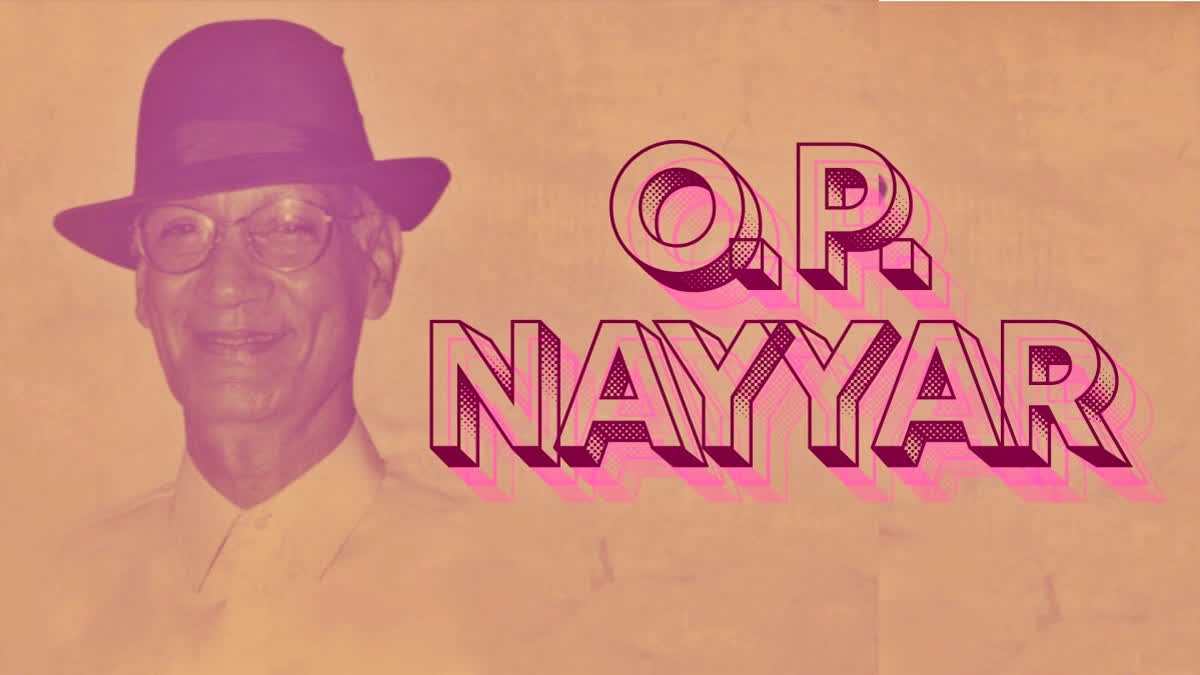There are names that follow the rules and names that write their own. O.P. Nayyar, the self-taught maverick of Bollywood music, belonged to the latter. With his signature white shirt and trousers, black hat and an air of defiance, Nayyar was an industry disruptor.
Born in Lahore in 1926, Omkar Prasad Nayyar’s journey from the Partition-torn streets of Punjab to the big studios of Bombay mirrored the kind of stories his music often told: vivid, tumultuous and unforgettable. He was not classically trained, nor did he let that hold him back. Instead, Nayyar’s music drew from the pulse of the world around him: the clip-clop rhythm of horse hooves, the infectious energy of Punjabi folk, the elegance of Western instruments, and the emotive strains of Hindustani classical.
For Nayyar, rules were merely suggestions and tradition was a starting point, not a boundary.
Early Adopter Of Western Beats
O.P. Nayyar had an uncanny ability to marry Western rhythms with Indian beats. He often used Western instruments like drums and castanets to set the pace in the mukhra (verse) of his songs, only to seamlessly transition to Indian percussive instruments like the dholak and tabla in the antara (chorus).
This duality lent his compositions a dynamic texture that was entirely his own. Songs like Balma Khuli Hawa Mein (from 1964 movie Kashmir Ki Kali) exemplify this fusion, with their Western drum beats blending effortlessly into the earthy, melodious cadence of Indian folk rhythms. His music wasn't contrived or forced; instead, it felt like a natural conversation between two musical worlds.
The Revolution In Rhythm
At a time when the sarangi was confined to mournful dirges in kothas and the santoor was treated as little more than background texture, Nayyar elevated these instruments to soaring heights. In his hands, the sarangi became playful, even joyful, as heard in Yeh Kya Kar Dala Tune from Howrah Bridge (1958) and Aankhon Hi Aankhon Mein from CID (1956).
The santoor too transformed under Nayyar’s baton, its whispers taking on an insistent, flowing rhythm in the prelude of Jaayiye Aap Kahan Jaayenge from Mere Sanam (1965).
Nayyar’s most enduring contribution, however, was his mastery of rhythm. His percussion innovations, from the galloping tonga beat to the Spanish flair of castanets, redefined how rhythm could drive a song. Tracks like Banda Parwar Thaam Lo Jigar (from Phir Wohi Dil Laya Hoon in 1963) and Zara Haule Haule Chalo Mere Saajna (in 1966 movie Saawan Ki Ghata) pulse with energy and life.
The Rebel Maestro
Nayyar’s reputation as a rebel extended beyond his compositions. At the height of her career, when Lata Mangeshkar was considered indispensable, Nayyar famously refused to work with her. “The song is more important than the singer,” he declared, a belief that led him to mentor Asha Bhosle and help her develop a style distinct from her sister’s. Their partnership resulted in some of Bollywood’s most iconic tracks, from Aayiye Meherbaan (in 1958 Madhubala-starrer Howrah Bridge) to Jaaiye Aap Kahan Jayenge.
But Nayyar’s temperament was as fiery as his music. His fallout with Mohammad Rafi and his public scolding of Kishore Kumar are legendary, cementing his reputation as an uncompromising artist. This defiance also cost him dearly. As his star waned in the 1970s, Nayyar found himself increasingly sidelined by an industry unwilling to accommodate his mercurial ways.
A Legacy That Endures
O.P. Nayyar’s music was banned by All India Radio for being “too trendy” and “Westernized,” but it found a home on Radio Ceylon, where his melodies continued to captivate listeners. Decades later, his songs remain timeless, embraced by both old-school aficionados and a reel-happy generation rediscovering his rhythms on social media. Tracks like Maang Ke Saath Tumhara (from the fantastic 1957 movie Naya Daur) and Jaane Kahan Mera Jigar Gaya Ji (from 1955 film Mr. & Mrs. 55) are constantly remixed and reimagined even today.
Even in his final years, as he retreated into a quieter life of homeopathy and astrology, Nayyar never lost his sense of pride. He turned down the Lata Mangeshkar Award, stayed unapologetic about his choices and remained a figure who inspired equal parts admiration and intrigue. When he passed away in 2007, the world of music lost not just a composer but an innovator, a disruptor, and a voice that dared to be different.
Read more:



